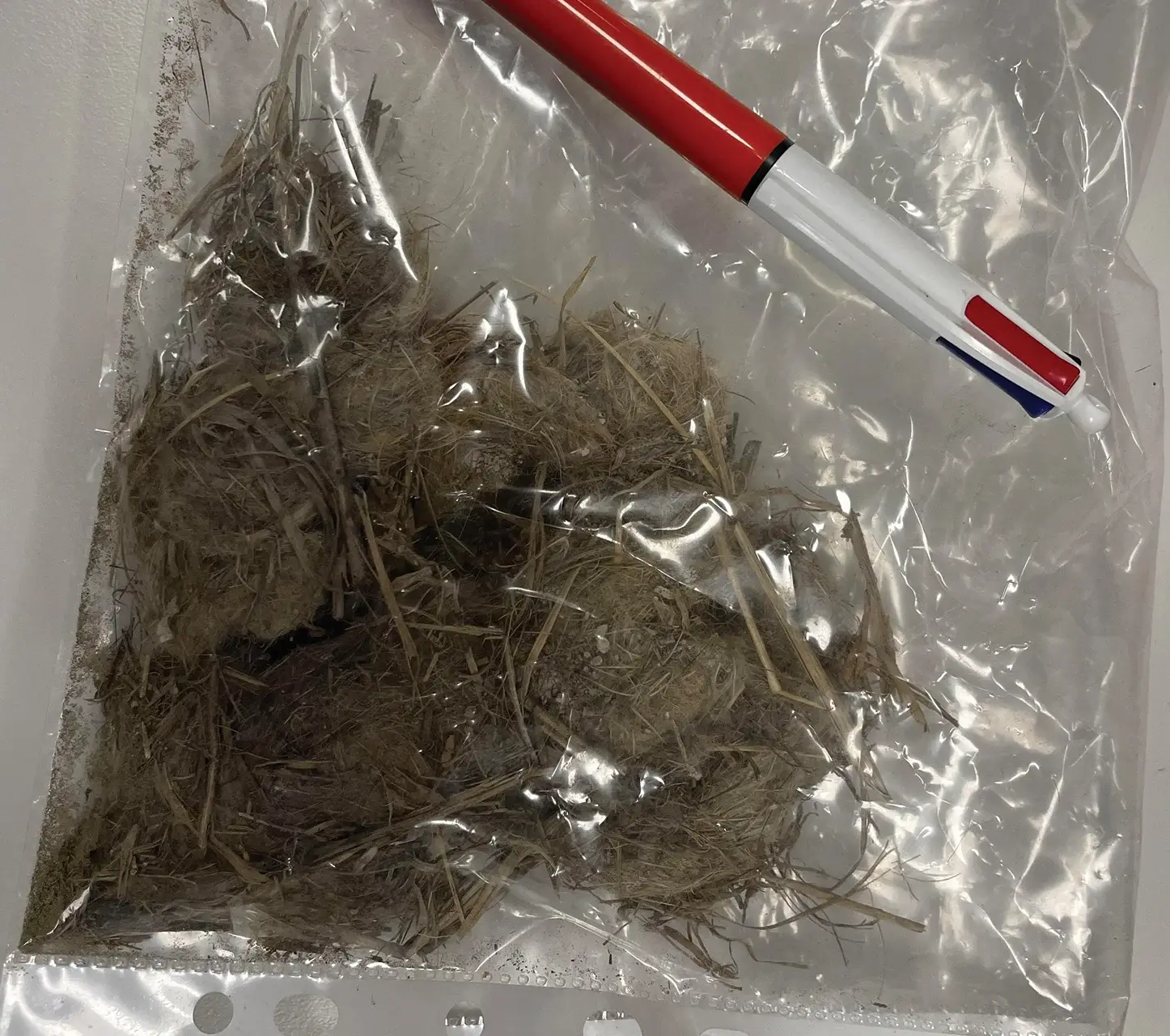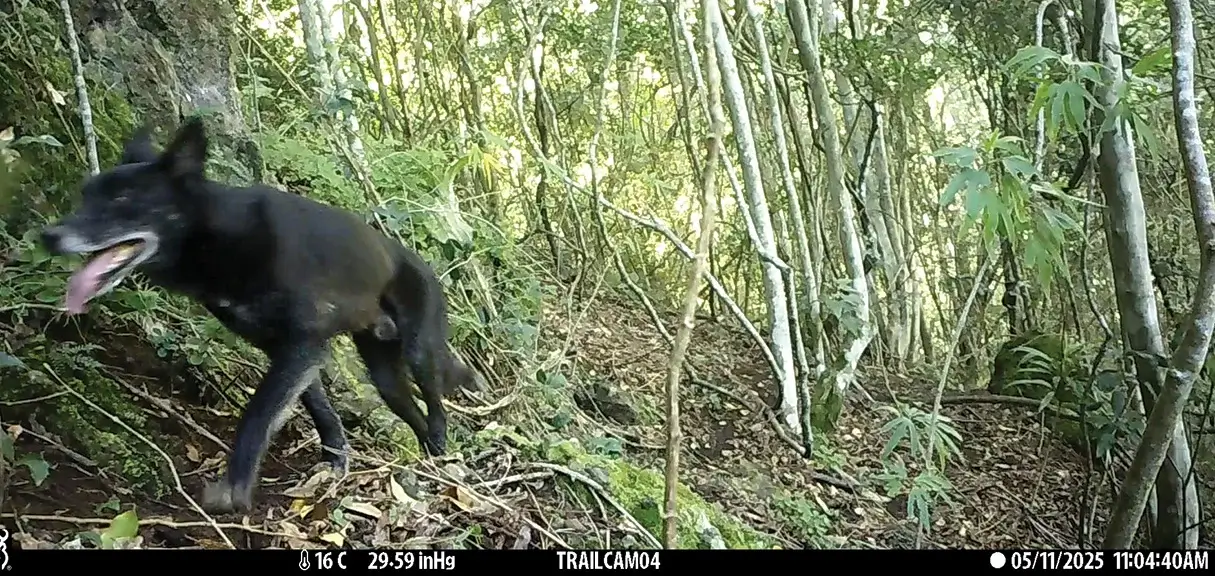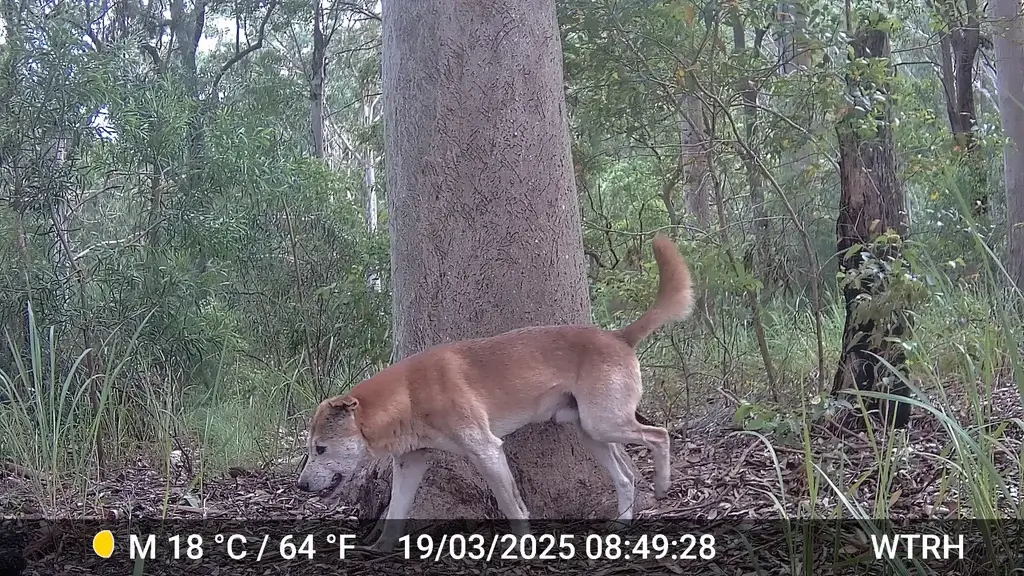Photos of wild dogs/Dingoes recorded on properties in the Scenic Rim over the past three years.
Over the past three years Scenic Rim Land for Wildlife property owners who do feral animal control on their land have been collecting samples for DNA analysis regarding wild dog/Dingo data. 98 samples have been sent away for analysis to NSW Department of Primary Industries contributing to the National Wild Dog Action Plan program.
We will continue to collect samples to gain a bigger picture, but the results so far are interesting. This is not an article about the pros or cons of wild dog/Dingo control, but a presentation of local and recent scientific information.
Some interesting data from the 67 samples that provided dingo percentages:
- A high number of samples (54) contained >50% Dingo genes.
- 22 samples had a Dingo percentage of >70% with colourings including: yellow/ginger/gold; black and tan; black; and black, tan and white.
- There were no pure domestic dogs.
- There was one pure Dingo (98%) with yellow/gold colours and a white tip on tail and legs.
- The lowest Dingo percentage was 37%, an old female with white and brown colourings.
- The sample that we all said ‘looked very Dingo-like’ was an adult male 70% Dingo.
- A very big adult male with black with white colourings was 67% Dingo.
- Four samples were sub-adults 80% Dingo.
There are 13 subpopulations of Dingoes across Australia. The Scenic Rim samples fell into three subpopulations:
- 1 belonged to the broad eastern Australian subpopulation.
- 60 belonged to the north-eastern NSW subpopulation.
- 37 belonged to south-eastern Queensland subpopulation.
Scenic Rim Land for Wildlife members have also been collecting carnivore scat samples for analysis by Scatsabout to confirm what the carnivore had been eating. So far, 18 samples from wild dogs/Dingoes have been analysed. The most common prey detected was Northern Brown Bandicoot (5 samples) with other species recorded including: Long-nosed Bandicoot, introduced Black Rat and House Mouse, cow, quail, Swamp Wallaby, insects, birds and Eastern Grey Kangaroo.
Scenic Rim Regional Council will continue to support Land for Wildlife members to collect ear and scat samples for analysis. Please contact Catherine Madden at Scenic Rim Regional Council if you wish to be involved.


Article by Catherine Madden
Land for Wildlife Officer
Scenic Rim Regional Council



How many genetic markers did they test to? I wouldn’t be sending samples to the NSW government. You’re much better off sending them to Dr Kylie Cairns at the University of NSW.